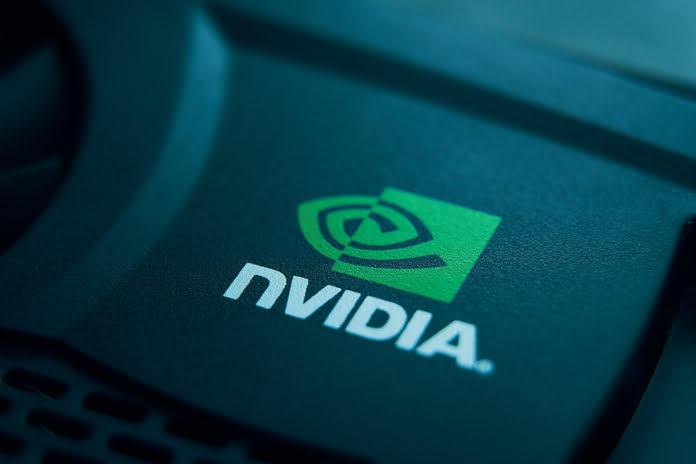NVIDIA Corporation (NASDAQ:NVDA), the world’s largest chipmaker, has been a focal point of the stock market over the past few years, especially due to its leadership in artificial intelligence (AI). Despite this strong position, NVIDIA stock performance has recently taken a hit, with over $400 billion wiped out from its market value. Given the volatility, regulatory scrutiny, and a new share repurchase plan, many investors are questioning whether now is the time to buy, hold, or sell NVDA stock.
NVIDIA’s Recent Volatility: Market Reaction to Regulatory Probes
NVIDIA experienced extreme market volatility over the past month, with its 30-day realized volatility reaching a two-year high. During this period, NVIDIA lost $406 billion in market capitalization, the worst two-week stretch the company has seen in two years. This sharp selloff was triggered by news that the U.S. Department of Justice had summoned NVIDIA as part of an antitrust probe. The investigation raised concerns over the company’s contracts, leading to heightened apprehension on Wall Street about the future of NVIDIA stock performance.
September has historically been a challenging month for NVIDIA. On average, the stock declines 2.4% during this month, compared to a 1.2% drop in the S&P 500 index. Despite these recent struggles, NVIDIA’s long-term outlook remains positive, with the stock still up more than 100% for the year.
Stock Buyback Signals Confidence in NVIDIA’s Future
Amid the regulatory challenges, NVIDIA recently announced a $50 billion share repurchase plan. This move has helped restore some investor confidence, as stock buybacks tend to reduce the number of outstanding shares, thereby boosting the value of the remaining shares. A share repurchase signals that management is optimistic about the company’s future and believes its stock is undervalued.
Additionally, NVIDIA stock performance has consistently stayed above its 200-day moving average, indicating a long-term uptrend. The share buyback, combined with this technical strength, suggests that NVIDIA has the potential to rebound from its recent losses and continue rewarding long-term shareholders.
The Blackwell Architecture: NVIDIA’s Next AI Breakthrough
Another key driver for NVIDIA’s future growth is its upcoming Blackwell AI chip architecture. Set to launch later this year, Blackwell represents a significant upgrade over NVIDIA’s current Hopper platform, offering greater processing power and high-speed communication—critical for AI and machine learning applications.
If past launches are any indication, Blackwell could have a significant impact on NVIDIA stock performance. The company’s share price saw double-digit gains in the three months following the launch of its previous platforms, Hopper and Ampere. Analysts expect the Blackwell architecture to further strengthen NVIDIA’s dominance in the AI space, driving revenue growth in the coming quarters.
Why Investors Are Still Bullish on NVIDIA Stock
Beyond its AI advancements, NVIDIA has several other growth opportunities. CEO Jensen Huang recently highlighted the shift from central processing units (CPUs) to graphics processing units (GPUs) in handling data—a trend that benefits NVIDIA, the global leader in GPUs. The market for GPUs is expected to grow from $56.55 billion in 2023 to $1,414.39 billion by 2034, offering NVIDIA a massive runway for growth.
NVIDIA is also expanding its reach beyond AI, entering the gaming space with its GeForce product line and collaborating with Siemens on the industrial metaverse. These ventures are expected to act as tailwinds for the company, further boosting its long-term earnings potential. In fact, the Consensus Estimate for NVIDIA’s earnings per share is up 76.1% year over year, signaling strong confidence in the company’s ability to deliver robust results.
Is NVIDIA Stock Too Pricey Right Now?
While NVIDIA’s long-term growth prospects are undeniable, the stock is currently trading at a high price-to-earnings (P/E) ratio of 46.9X forward earnings, making it more expensive than its competitors. For comparison, Qualcomm Incorporated (NASDAQ:QCOM) trades at a P/E ratio of 15.8X, and Broadcom Inc. (NASDAQ:AVGO) trades at 28.9X. This raises the question: is NVIDIA’s stock overvalued, or does it still have room to grow?
For investors who already hold NVIDIA shares, the best course of action may be to stay the course, as the demand for AI technology continues to surge. However, those looking to enter the market may want to wait for a better entry point, as the stock’s high valuation could make it susceptible to further volatility in the short term.
Conclusion: NVIDIA Stock Performance and the Road Ahead
NVIDIA has experienced significant volatility in recent months, but its long-term growth prospects remain intact. The combination of a $50 billion stock buyback, the upcoming Blackwell AI chip launch, and its dominant position in the GPU market provide reasons for optimism. However, investors should be cautious of the stock’s high valuation and ongoing regulatory scrutiny.
For those already invested, NVIDIA stock remains a solid long-term play. For prospective buyers, it may be wise to wait for a more favorable entry point.
Featured Image: Megapixl









